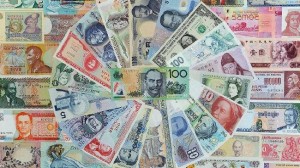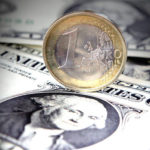 Australian dollar traded lower and was set to register a weekly loss against its US counterpart on Friday, as concerns that Chinese economy was slowing down and Crimea tensions urged investors to reduce their possessions of high-yielding assets, such as the Aussie.
Australian dollar traded lower and was set to register a weekly loss against its US counterpart on Friday, as concerns that Chinese economy was slowing down and Crimea tensions urged investors to reduce their possessions of high-yielding assets, such as the Aussie.
AUD/USD touched a session low at 0.8997 at 5:20 GMT, after which consolidation followed at 0.9005, losing 0.29% for the day. The pair was poised to register a 0.72% weekly decline. Support was likely to be found at March 12th low, 0.8924, while resistance was to be encountered at March 13th high, 0.9104.
Crimean referendum
Crimea is to conduct a vote on whether to leave Ukraine and join Russia this weekend.
“The way the vote is going to go is that the referendum will probably pass”, said Joseph Capurso, Sydney-based currency strategist at Commonwealth Bank of Australia, cited by Bloomberg News. “So far, we haven’t had a lot of shooting and the like at each other, but if Crimea is just about to join Russia, then you might get that. Aussie will probably go below 88-89” US cents.
Goldman Sachs forecast
Goldman Sachs Group Inc. revised down its forecast for the exchange rate of the Aussie, citing the currencys weakening trend as one of institutions “strongest conviction views” during the next 3 to 6 months. The 12-month forecast for the AUD/USD has been revised to 0.8000 from 0.8500.
“The guts of the data releases are not as positive as the headlines suggest,” Goldman Sachs strategists Robin Brooks and Fiona Lake, wrote in a report yesterday, as reported by the same media. “With the weakness under the hood and the ongoing influence of the turn in the investment cycle, we still think that there is a good chance of an RBA cut over the summer.”
Australian employment
Yesterday the Australian currency rose to highs unseen since March 7th, after a report by the Australian Bureau of Statistics made it clear that employers in the country hired 47 300 people in February compared to January, when employment increased by a revised up 18 000. Experts had anticipated that the number of new employees will increase by 15 300 last month. Full-time employment increased by 80 500, which has been the most considerable rate of change since August 1991.
At the same time, the rate of unemployment in the country remained steady at 6.0% in February, a level last registered in July 2003.
Part-time employment decreased by 33 300 last month, while the number of people looking for a job unexpectedly rose.
The yield on Australian benchmark 10-year government bonds fell 13 basis points, or 0.13 percentage point, to reach 4.04% today, after climbing to as high as 4.25% on Thursday, which has been the highest level since February 13th.
Chinese economic reports
However, data by the Chinese National Bureau of Statistics revealed that nations industrial production rose 8.6% in February compared to a year ago, or below preliminary estimates pointing to a 9.5% gain.
In addition, retail sales in the country climbed at an annualized rate of 11.8% in February, while the median estimate of experts pointed to an increase by 13.5%.
The Aussie tends to be sensitive to data coming out of China, as the latter is Australia’s largest export partner.
US retail sales, initial jobless claims
Retail sales in the United States were reported to have risen for the first time in three months in February, as consumers increased their online purchases, as well as purchases of automobiles, clothing, sports equipment and pharmaceutical products. The index gauging retail sales climbed 0.3% in February compared to a month ago, while preliminary estimates pointed to a 0.2% gain.
Retail sales, excluding sales of automobiles, also increased 0.3% last month, while the median estimate of experts pointed to a 0.1% increase.
Overall retail sales in January and December have been revised down, as Januarys drop was 0.6% (0.4% previously) and Decembers drop was 0.3% (0.1% previously).
This indicator accounts for almost one third of nations consumer spending, while the latter is the major driving force behind US economic growth.
A separate report showed that the number of people who filed for unemployment assistance in the United States decreased by 9 000 to reach 315 000 during the week ended on March 8th, which has been the lowest number of claims since late November. Analysts had projected that the number of initial jobless claims will increase to 330 000. Continuing jobless claims in the country were also reported to have decreased, by 48 000 to 2.86 million.
Aussie versus Euro, New Zealand dollar
The Australian currency was losing ground against the euro, with EUR/AUD cross up 0.17% on a daily basis to trade at 1.5379 at 8:04 GMT.
AUD/NZD was falling 0.08% to trade at 1.0563 at 8:05 GMT. The pair earlier touched a daily low at 1.0547.
Reserve Bank of New Zealand decided to raise the benchmark interest rate by 0.25% at its policy meeting, which marked the first increase in rates since March 9th 2011. RBNZ Governor Graeme Wheeler said that bank’s monetary policy may be further tightened during this year in order to curb inflationary pressure. The central bank expects to boost borrowing costs by about 2 percentage points during the next two years, as the pace will be in dependence on economic data.
New Zealand’s Performance of Manufacturing Index came in at a reading of 56.2 in February from a revised up reading of 56.3 during January, according to a survey by Bank of New Zealand and Business New Zealand. Values above the key level of 50.0 are indicative of expansion in the sector.





